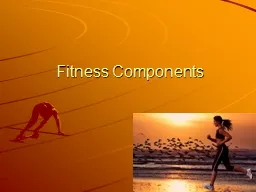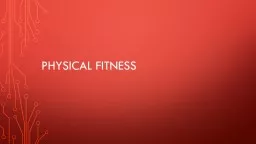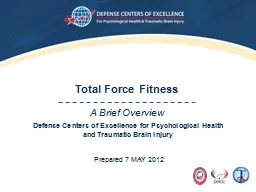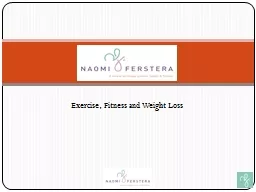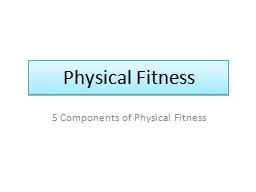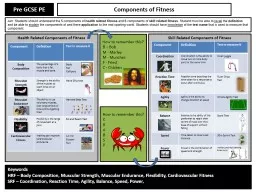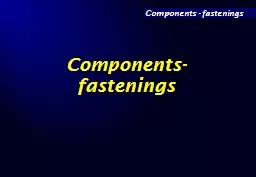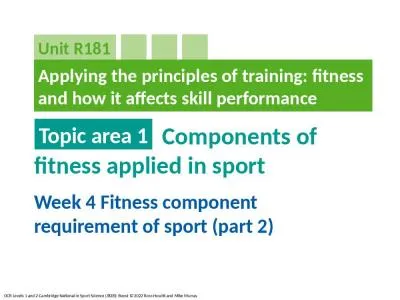PPT-Components of Fitness KEY KNOWLEDGE
Author : magdactio | Published Date : 2020-06-16
KEY SKILLS Healthrelated fitness components including aerobic capacity anaerobic capacity muscular strength and endurance flexibility body composition Skillrelated
Presentation Embed Code
Download Presentation
Download Presentation The PPT/PDF document "Components of Fitness KEY KNOWLEDGE" is the property of its rightful owner. Permission is granted to download and print the materials on this website for personal, non-commercial use only, and to display it on your personal computer provided you do not modify the materials and that you retain all copyright notices contained in the materials. By downloading content from our website, you accept the terms of this agreement.
Components of Fitness KEY KNOWLEDGE: Transcript
Download Rules Of Document
"Components of Fitness KEY KNOWLEDGE"The content belongs to its owner. You may download and print it for personal use, without modification, and keep all copyright notices. By downloading, you agree to these terms.
Related Documents




